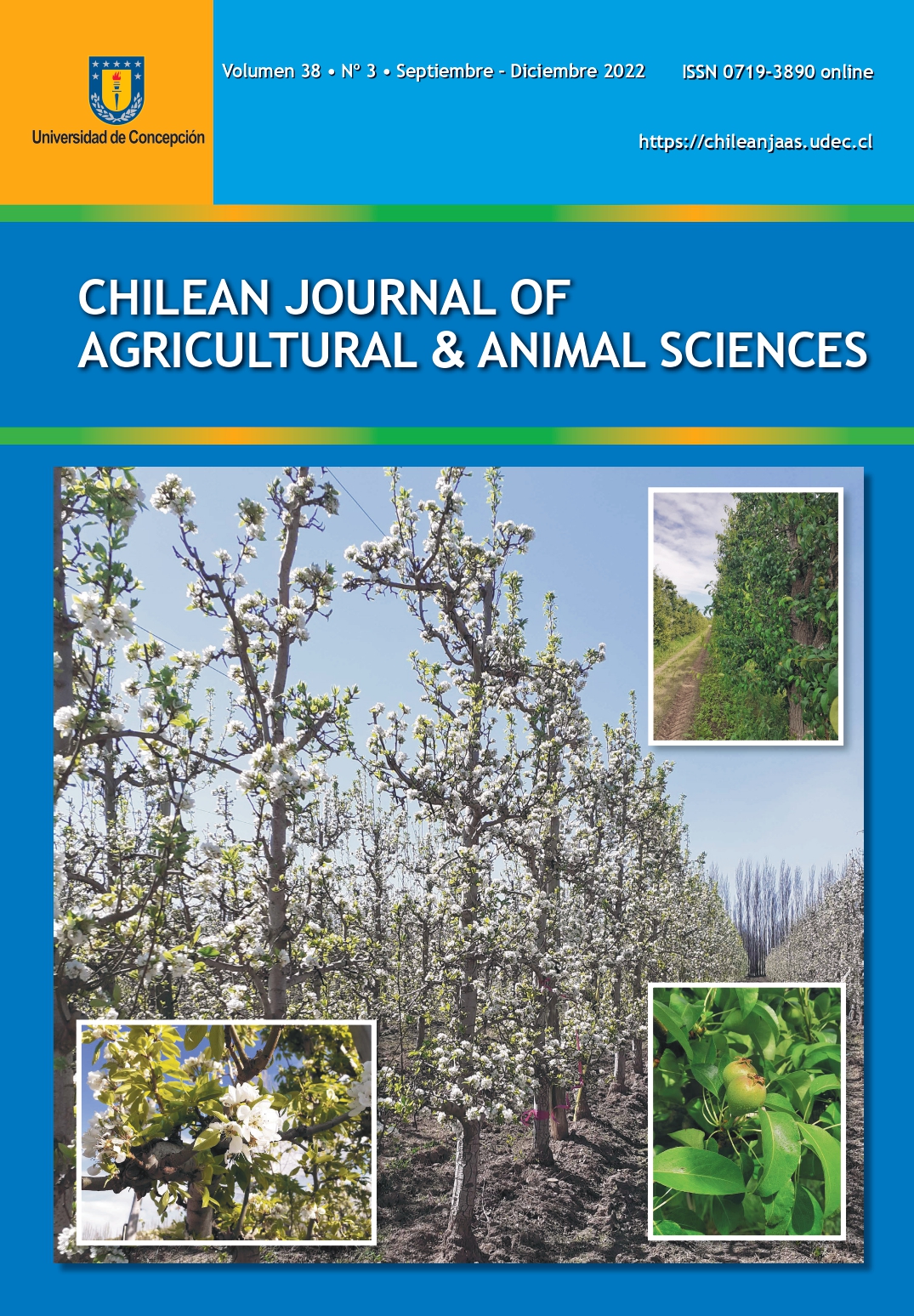METHODOLOGY FOR AVOCADO (Persea americana Mill.) ORCHARD EVALUATION USING DIFFERENT MEASUREMENT TECHNOLOGIES
DOI:
https://doi.org/10.29393/CHJAA38-25GTER10025Resumen
Avocado crop (Persea americana Mill.) is of great commercial importance due to its high profitability. However, it is being affected by various diseases and pests that affect yield and reduce fruit quality. The aim of this research was to develop methodologies for the evaluation of avocado plantations using different non-destructive technologies for rapid phenotyping and early detection of the incidence of diseases or damage due to stress in the stem. A plot of 0.7 ha. was evaluated, with a total of 44 individuals using Field-Map technology (dasometric and morphological characterization), RGB-multispectral images from Remotely Piloted Aircraft System (RPAS) (rapid phenotyping), while 15 individuals were evaluated using tomography (assessment of the internal state of the stem). The results with tomography indicated that there is a tree with wood rot of 14% with a lower acoustic speed with respect to the other trees evaluated. A high correlation was observed between the dasometric variables (r-Pearson from 0.63 to 0.98) estimated with Field-Map [crown base height, crown projection (m2 ) and total height] and with RPAS (height, perimeter and area). The vegetation indices do not have a direct correlation with the dasometric variables; five of the indices have a high contribution to variability except for the Normalized Difference Red Edge (NDRE). It can be concluded that the technologies used in this study would help to perform evaluations with a greater number of reliable and precise data with respect to the information obtained in a traditional way, while they can be replicated in commercial plots or research studies of different perennial crops, generating useful information for management decisions and crop evaluation.
Descargas
Publicado
Cómo citar
Número
Sección
Derechos de autor 2022 Sheyla Y. Chumbimune, Gloria P. Cardenas, David Saravia, Lamberto Valqui, Wilian Salazar, Carlos Arbizu Berrocal

Esta obra está bajo una licencia internacional Creative Commons Atribución 4.0.







